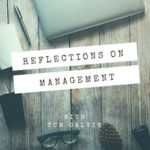99: Gendering in Organizations — Joan Acker
Joan Acker’s 1990 article “Hierarchies, Jobs, Bodies: A Theory of Gendered Organizations” was a significant work in feminist theories of organizations. She charged that prior feminist research had wrongly assumed that organizational structures were gender neutral. Instead, everything about organizations from structures to symbols are inherently gendered, and until that was acknowledged and studied, organizations would continue to reinforce long-standing gender inequalities. The article is significant for its synthesis of a growing body of research that questioned the claims of gender neutrality in organizational practices that creates and sustains barriers to women’s equality in the workplace.











